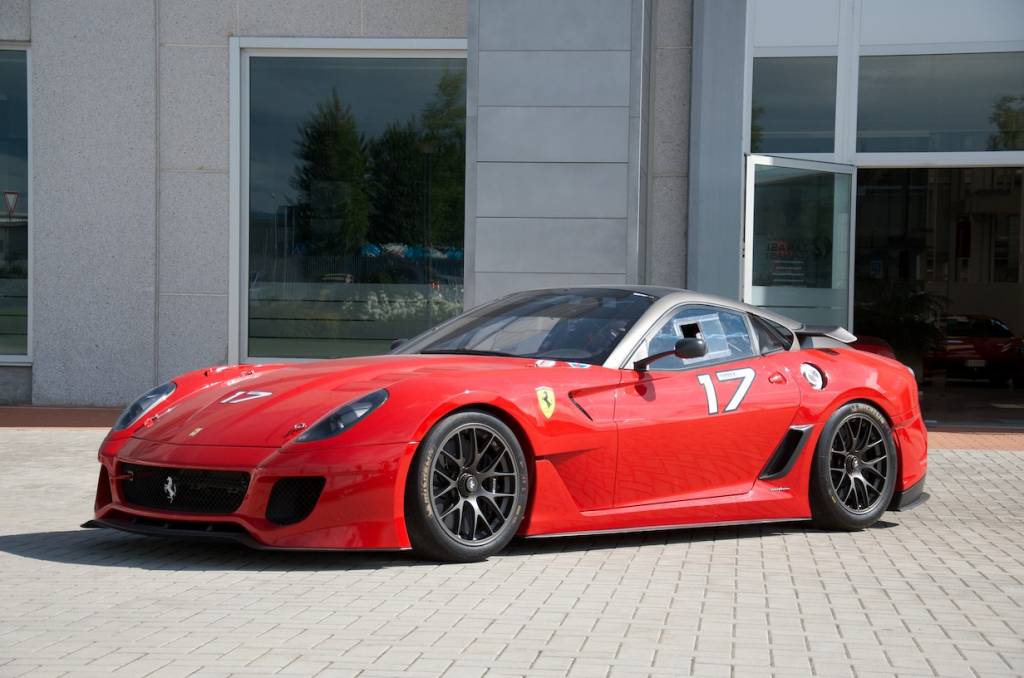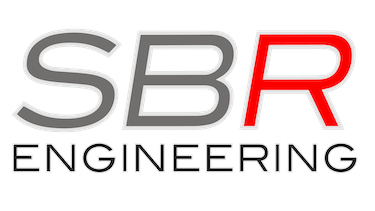
The 599XX incorporates the most advanced technological solutions, resulting from Ferrari’s road-going and F1 research.
Many are being used for the first time, and have been developed exclusively for this special car. While based on the 599 GTB Fiorano ,with the same transaxle layout and engine type, this prototype is an extreme track car.
Ferrari’s engineers have carried out extensive work on the engine’s combustion chambers and inlet and exhaust tracts. The 599XX is characterised by an innovative electronic concept called the ‘High Performance Dynamic Concept’, which has been designed to get maximum performance from the car by managing the combination of the car’s mechanical limits with the potential of its electronic controls.
Ferrari’s engineers have carried out extensive work on the engine’s combustion chambers and inlet and exhaust tracts. These modifications, combined with the fact that internal attrition has been reduced and the maximum revs have been boosted to 9,000 rpm, helped achieve the target power output of 700 hp at 9,000 rpm.
Particular attention was also paid to cutting the weight of the engine unit components. This was achieved both by optimising forms – as in the new crankshaft – and adopting exclusive materials, as in the carbon-fibre used for the intake plenums. A new gearbox shift strategy cuts overall gear-change times to 60 ms.
The 599XX is characterised by an innovative electronic concept called the ‘High Performance Dynamic Concept’, which has been designed to get maximum performance from the car by managing the combination of the car’s mechanical limits with the potential of its electronic controls. The mechanical and electronic systems work together to get the maximum performance from the car under extreme high performance driving, for consistent lap times.
The ‘Actiflow™’ system increases down-force and/or cuts drag, depending on the car’s trim cornering conditions, courtesy of the use of a porous material in the diffuser and two fans in the boot, which channel the air flow from under the car out through two grilles next to the tail lights.
Winglets have been added to the rear buttresses to increase downforce, while synthetic jets have also been incorporated into the rear of the car to control and smooth the air flow and to reduce drag. Ferrari’s engineers have also used F1-derived ‘doughnuts’, which partly cover the brake discs and wheel rim, these have the dual functions of improving aerodynamics and cooling the brakes.
These modifications, combined with the fact that internal attrition has been reduced and the maximum revs have been boosted to 9,000 rpm, helped achieve the target power output of 700 hp at 9,000 rpm. Particular attention was also paid to cutting the weight of the engine unit components.
Beijing, 23 April – The Ferrari 599XX is the first ever production-derived sports car to break the 7-minute barrier on the classic 20.832 km Nordschleife circuit, lapping in 6 min 58.16 sec.
On the aerodynamics front, the car sees the introduction for the first time of the Actiflow™ System that increases downforce and/or cuts drag depending on the car’s trim during cornering. This, together with other careful detailing, ensures that the 599XX boasts extraordinary levels of downforce – up to 630 kg at 300 km/h.
Ferrari 599XX Technical Specifications
Year of Manufacture - 2011
| Engine | V12 | |
| Displacement (Litres) | 6.0L | |
| Aspiration | Naturally Aspirated | |
| Power (hp) | 740 hp @ 9,000 rpm | |
| Power (hp) / liter | 123.3 hp / liter | |
| Power (hp) / weight | 0.50 hp / kg | |
| Torque | 516 lb-ft @ 6,500 rpm | |
| 0-60 mph time | 2.9 seconds | |
| ¼ Mile (standing) | 10.8 seconds | |
| Top Speed | 196 mph (315km/h) |
| Chassis, Suspension & Powertrain | ||
| Curb Weight | 1,486 kg | |
| Layout | Front engine, Rear-wheel drive | |
| Body / Frame | All-aluminum | |
| Suspension (F) | Independent, Short/long arm | |
| Suspension (R) | Independent, Double wishbones | |
| Steering | Variable-assisted rack-and-pinion | |
| Brakes | Carbon ceramic brakes (Discs and Pads), Lightweight aluminum brake calipers | |
| Tires | Pirelli Racing Slicks | |
| Transmission | F1 ‘SuperFast’ 6-speed Automated Manual |
